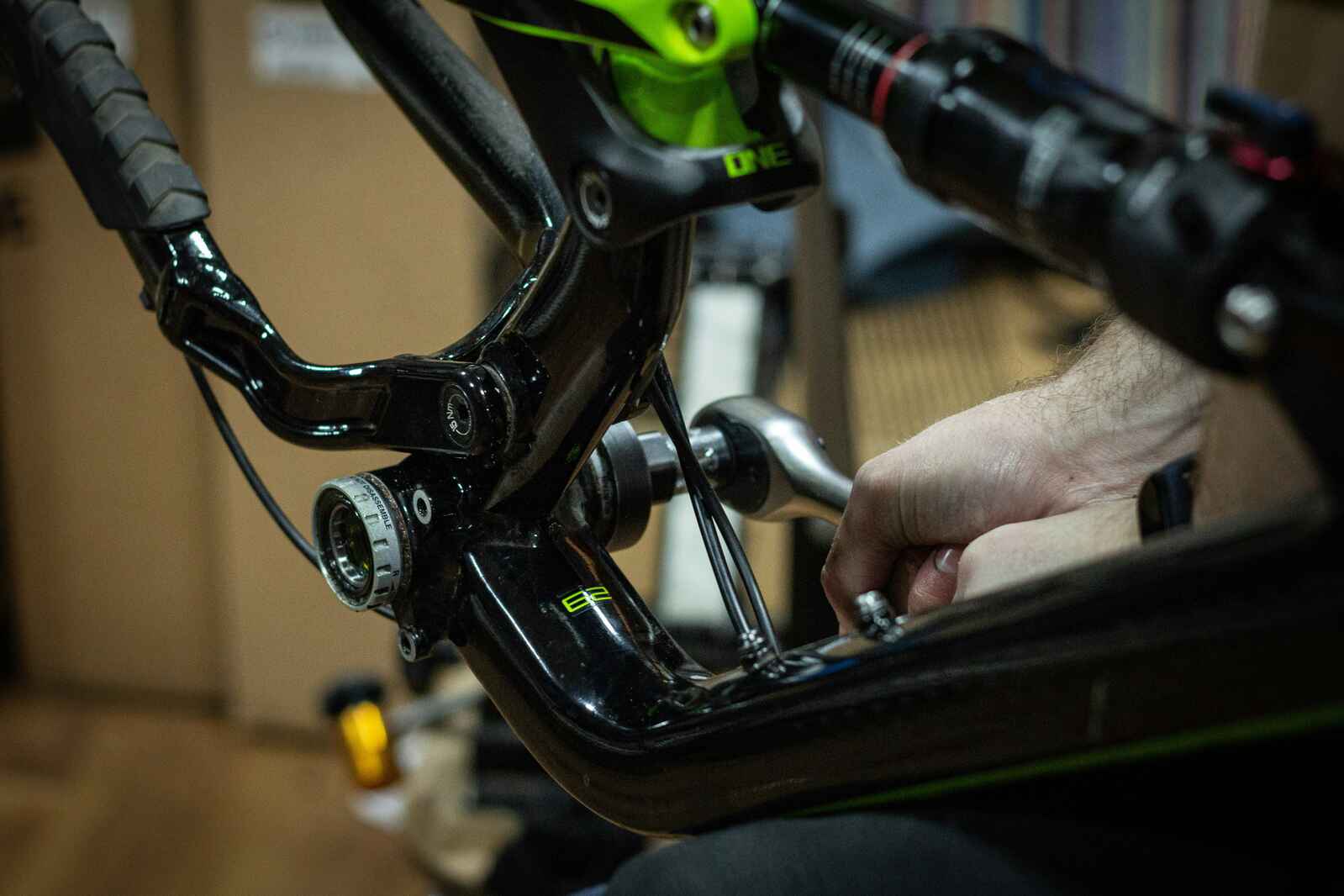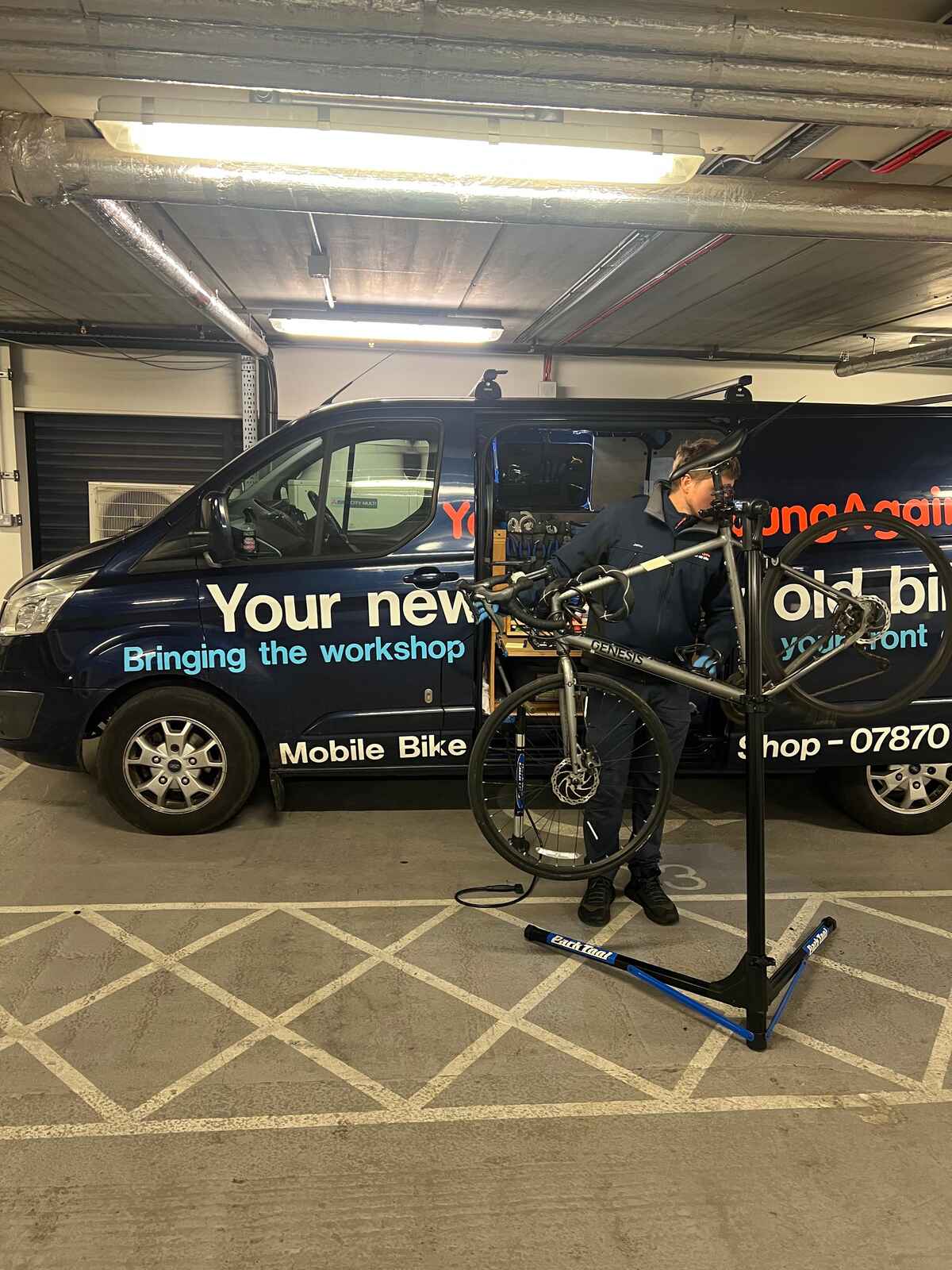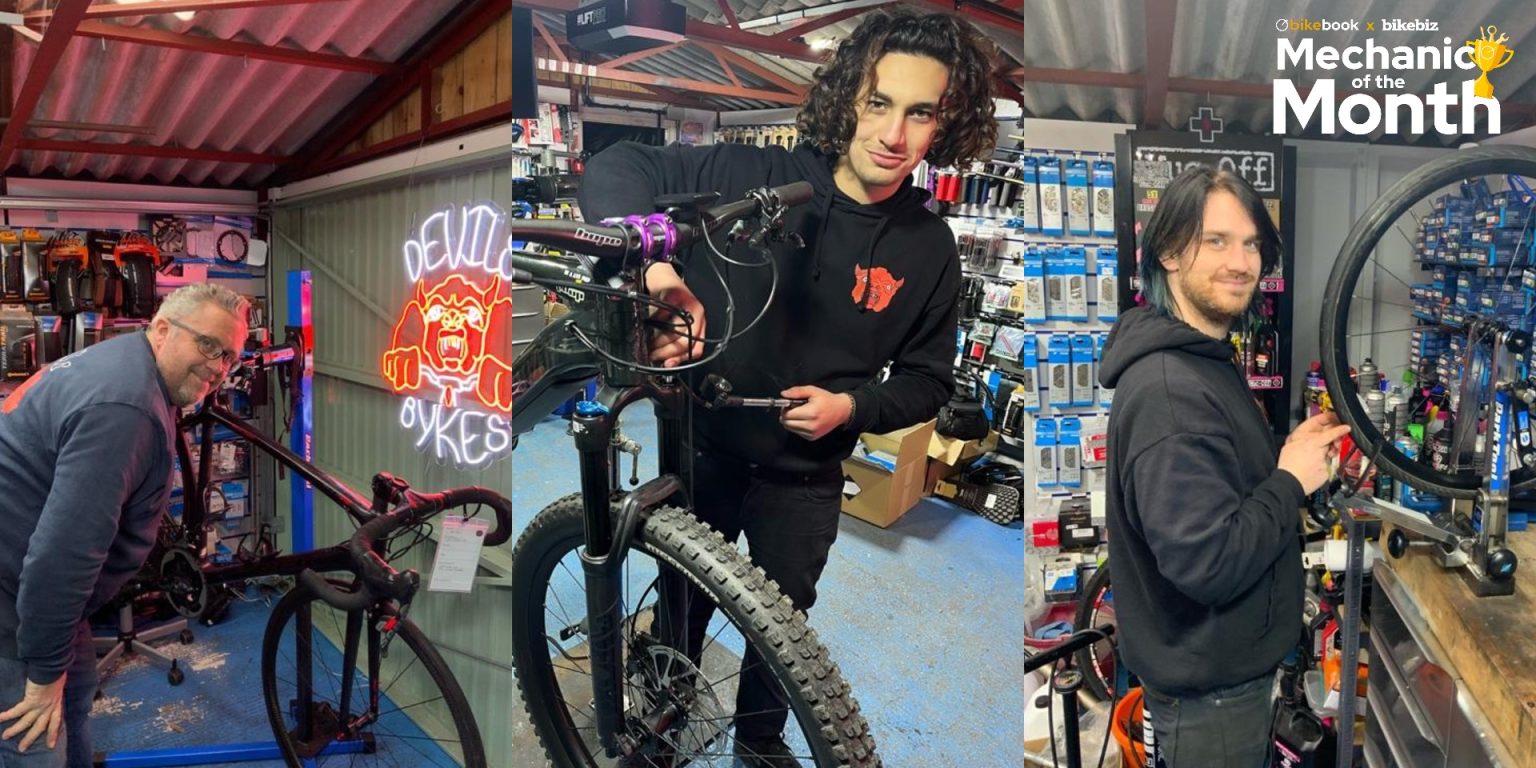December 14, 2025
•
8 minute read
How to Fix a Bike: A Comprehensive Guide
You're blazing down the trail when, suddenly, your bike gives up on you. A sinking feeling hits - the flat tyre, the slipping gears, the brakes that squeal with every press.
Jake Fieldsend
Founder & CFO
You're blazing down the trail when, suddenly, your bike gives up on you. A sinking feeling hits - the flat tyre, the slipping gears, the brakes that squeal with every press. You're left wondering where you went wrong. Knowing how to fix these irritations can save you time, money, and additional frustration. Whether you're a seasoned cyclist or a weekend warrior, this guide on "how to fix a bike" will help you identify common issues and keep your trusty steed in top shape. So what's gone awry with your ride? Let's get to the bottom of it.
1. Identifying Common Bike Problems
1.1 What Causes a Flat Tyre?
A flat tyre can be a cyclist's worst nightmare, often striking when you're miles from home. The culprit is usually one of three things: punctures, pinch flats, or slow leaks. Punctures are often caused by sharp objects like glass or thorns embedding themselves into the tyre. Pinch flats, or snake bites, occur when your wheel hits a hard edge, pinching the inner tube between the tyre and rim. Slow leaks, on the other hand, happen when a small puncture allows air to escape gradually, possibly from a faulty valve stem or improper seating of the tube.
How to prevent flats?
- Inspect your tyres regularly: Look out for embedded debris and ensure the tyres are in good condition.
- Maintain proper tyre pressure: Use a pressure gauge to avoid pinch flats.
- Consider self-sealing tyres or puncture-resistant tubes: These can significantly reduce the frequency of flats.
Pro-tip: If you do suffer a flat, carry a patch kit and a portable pump. They're lifesavers on long rides!
1.2 Why are My Brakes Squeaking?
Few things are as annoying—or potentially dangerous—as squeaky brakes. Dirty rims, worn-out pads, or improperly aligned brake components can all lead to that unpleasant noise. If dirt, grime, or foreign objects lodge themselves between the brake pad and rim, they can cause squeaking. Glazed surfaces on your brake pads, often from overheating, can also produce that high-pitched sound. Lastly, if the brake pads aren't contacting the rim evenly, misalignment is likely to blame.
Brake squeak solutions:
- Clean brake pads and rims: Use alcohol wipes to remove grime efficiently.
- Sand glazed pads: Lightly sand with fine-grit sandpaper.
- Align brake pads correctly: Ensure they strike the rim evenly for quiet, effective braking.
Pro-tip: Regularly check for pad wear and replace them before they reach the metal backing to keep your rides safe and quiet.
1.3 How to Spot Gear Problems
When gears aren’t shifting smoothly, it's usually due to one of several factors: cable tension issues, misaligned derailleurs, or worn-out components. Cable tension affects how the chain moves across the gears. If the derailleur is out of alignment, your chain might jump or refuse to shift neatly. Over time, chain and gear wear from regular use might be at fault, causing slipping or skipping.
Spotty gear fixes:
- Check cable tension first: Adjust the barrel adjuster on the gear shifter for minor tweaks.
- Inspect derailleur alignment: The derailleur should be parallel to the cogs.
- Check for worn components: Replace chains or cogs if wear is evident to restore smooth operation.
Pro-tip: Lubricate your chain regularly to minimise wear and keep shifting silky smooth.
2. Step-by-Step Guide to Fixing Your Bike
2.1 Patching a Flat Tyre
You've got a flat tyre, and it's hot enough to boil tea on the pavement. Before frustration takes the better of you, remember it's nothing a bit of ingenuity can't fix. Follow these steps to get back on the road:
- Remove the Wheel: Using a wrench, loosen the nuts or quick release lever to take off the wheel. Don't worry about getting your hands dirty; it’s part of the job.
- Locate the Puncture: Inflate the tube a bit and listen for the hiss. If it's not audible, submerge it in water and look for bubbles. Mark the spot with a pen.
- Preparation: Let the air out completely, dry the tube, and lightly rough up the area around the puncture with sandpaper.
- Apply the Patch: Smear a bit of adhesive around the hole and let it sit for a minute. Press the patch firmly over the adhesive and apply pressure for a good seal.
- Reassembly: Pop the tube back inside the tyre, fit it to the rim, and inflate it partially before fitting the tyre back onto the bike. Reattach the wheel securely.
Pro Tip: Always carry a spare tube and patches when you're out cycling. This simple practice can save you from an unexpected walk home.
2.2 Adjusting Your Brakes
The screeching symphony your brakes perform whenever you slow down is not just annoying—it’s dangerous. Here's how you can bring peace to your rides:
- Inspect the Brake Pads: Check if they're worn out. If there’s less than 1.5mm of pad material, it's time for replacement.
- Align the Pads: Loosen the retaining bolt and position the pads so they're parallel to the rim. Tighten them just enough to prevent slippage.
- Cable Tension: Use the barrel adjuster to tweak the tension. Turn it until you feel the brake lever pull with the right amount of resistance, usually about halfway to the handlebar.
- Fine-Tuning: Ensure your wheels spin freely without rubbing against the pads by adjusting the brake arms with a small screwdriver.
Pro Tip: If your brake pads are unevenly worn, it might indicate issues with wheel alignment. Align your wheel properly to distribute pressure evenly on the brakes.
2.3 Fixing Gear Slipping
Few things frustrate a cyclist like gear slipping, especially mid-climb. Let’s tackle this inconvenience head-on:
- Check the Cable Tension: Most gear slipping issues are due to loose cables. Use the barrel adjusters to increase tension, ensuring gears shift smoothly.
- Inspect the Derailleur Hanger: A bent hanger can throw off your drivetrain. Align it using a derailleur alignment tool if necessary.
- Clean and Lubricate: Grime buildup can hinder movement between the chain and gears. Clean your chain and cassette thoroughly and apply a quality lubricant.
- Adjust the Limit Screws: Use these screws to prevent the chain from missing its intended mark. Turning the screw clockwise will limit the derailleur’s range and vice-versa.
Highlight: Investing in a torque wrench is wise. It prevents overtightening, which can do more harm than good, especially with sensitive components like derailleurs.
With these guides, you're set to handle the most common breakdowns your bike might face. For problems more gnarly or if you're unsure, Bikebook can connect you with the right local expert to keep your cycling stress-free.
3. When to Seek Professional Help from Bikebook
3.1 Understanding When It's More Than a DIY Fix
You've got a knack for tinkering with your bike, but sometimes, the repairs might be out of your comfort zone. For instance, if you're dealing with a bent frame or persistent gear misalignment, it might need expert hands.
Here’s when you should consider a pro:
- Complex Structural Issues: Bent frames or damaged forks.
- Advanced Mechanical Problems: Deep-seated gear or brake issues.
- Persistent Issues: Problems that recur despite attempted repairs.
Pro-tip: If you’ve invested hours into fixing something with no resolution, it's time to bring in specialists who can save you further frustration.
3.2 Finding a Local Mechanic with Bikebook
Tired of endless searches for a reliable bike mechanic? Bikebook is your go-to for simplicity. Our platform connects you with skilled local mechanics in a few clicks. Here's why using Bikebook is beneficial:
- Wide Reach: Access to thousands of mechanics in your area.
- Ease of Comparison: Quickly compare services and reviews.
- Mobile Options: Find mobile mechanics if you can't transport your bike.
Pro-tip: To maintain your bike's longevity and performance, regularly using professional services might be more cost-effective than you think.
3.3 Benefits of Regular Professional Bike Servicing
Regular servicing by a professional can dramatically improve your bike's lifespan. You might overlook subtle wear and tear or minor issues that experts catch early.
Why invest in regular servicing?
- Prevention: Early detection of potential issues can save costly fixes.
- Performance: Enhance ride quality and efficiency.
- Safety: Ensure your bike remains safe to ride.
Pro-tip: Regularly servicing your bike not only maintains its value but also keeps you safer and more efficient on the roads.
Bike safety and performance shouldn't be left to chance. Knowing when to seek professional help can make all the difference. Whether it's a critical repair beyond your expertise or simply needing a reliable local mechanic, services like Bikebook provide invaluable support. Thanks to easy access and comprehensive services, staying on top of bike maintenance is simpler than ever. Explore local bicycle mechanic options with Bikebook for expert repairs and maintenance near you.
Explore local bicycle mechanic options with Bikebook
Frequently Asked Questions
How to repair a bike for beginners?
Start by learning the basics:
- Identify Common Issues: Check tyres, brakes, and chains.
- Basic Tools: Invest in a repair kit with tyre levers, wrenches, and screwdrivers.
- Online Tutorials: Use video guides for step-by-step repairs.
Is it worth fixing a bike?
Yes, fixing a bike can be cost-effective, especially if the bike is in otherwise good condition. Repairing rather than replacing maximises lifecycle value and maintains performance and safety benefits.
What is the most common bike repair?
Flat tyres are the most frequently encountered bike issue. Repair involves:
- Assessing Damage: Locate punctures.
- Patching/Replacement: Use a patch kit or replace the inner tube.
- Re-inflation: Properly inflate the tyre.
Is it hard to fix a bike puncture?
Fixing a puncture isn’t hard with the right tools and guidance. It requires:
- Patch Kit or New Tube
- Tyre Levers
- Pump A typical fix can be done in about 30 minutes.



